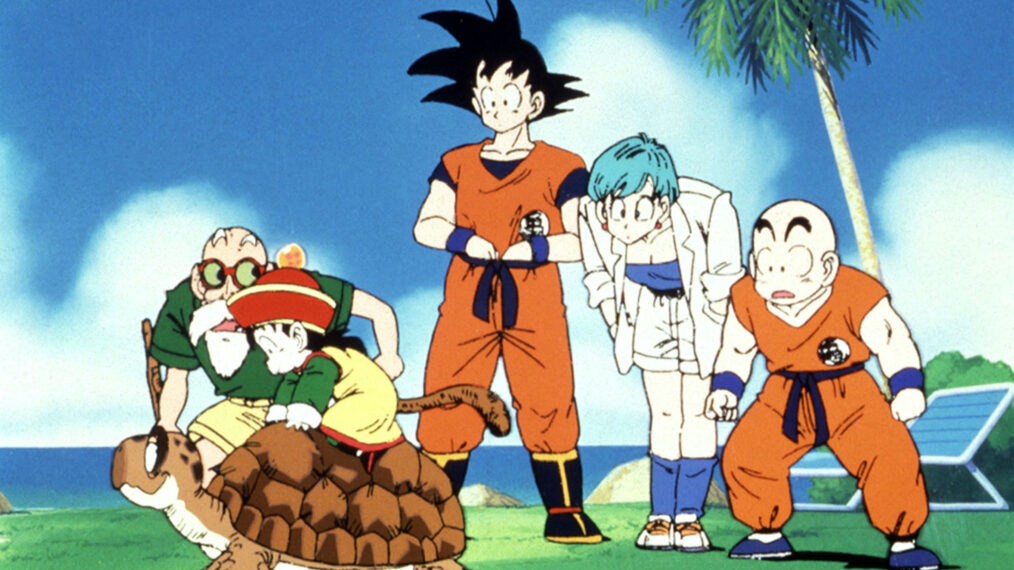Toonami Turns 25: 10 Standout Series From the Programming Block

True to its portmanteau name, Toonami has brought a wave of Japanese animation to America in the 25 years since it started as a daytime segment of the Cartoon Network schedule.
Toonami launched on March 17, 1997, with episodes of Thundercats, Cartoon Roulette, Voltron, and The Real Adventures of Jonny Quest. Before long, however, anime started taking over the lineup, getting U.S. audiences hooked on shows like Dragon Ball Z and Sailor Moon.
Cartoon Network took Toonami off the air in 2008, but Adult Swim resurrected the brand in 2012, and it’s been going strong on Saturday nights ever since. Here are some highlights from the past two and a half decades of Toonami programming.
Attack on Titan
In this series, the human hero Eren Jaeger joins the elite Survey Corps to fight the Titans after one of the titular giants attacks his hometown and kills his mother, the war between the species ending a century of peace.
Cowboy Bebop
A Western sci-fi noir with a philosophical bent, Cowboy Bebop follows a motley crew of bounty hunters aboard the spaceship Bebop as they take on jobs and confront their past. And the anime spawned a short-lived live-action Netflix series in 2021.
Dragon Ball Z
The mega-popular Dragon Ball Z broke Cartoon Network’s ratings records in 1999, the same year the franchise hit $3 billion in profits in Asia. An adaptation of Akira Toriyama’s Dragon Ball manga—and a successor to an earlier anime series—Dragon Ball Z depicts the continuing battles of Son Guku, now an adult with a kid named Gohan, against extraterrestrial threats.
Fullmetal Alchemist: Brotherhood
A small-screen take on Hiromu Arakawa’s manga of the same name—and an adaptation more faithful than 2003’s Fullmetal Alchemist—this 2009 series focuses on Edward and Alphonse Elric, two brothers searching for a mythical stone to undo the damage (and, in Al’s case, disembodiment) wreaked by their alchemy experiments.
Justice League Unlimited
Unlimited, indeed: This successor to Justice League capped off the DC Animated Universe by bringing legions of new heroes into the Justice League, with characters voiced by Carl Lumbly, Michael Rosenbaum, Morena Baccarin, and other faves from live-action genre TV.
Mobile Suit Gundam Wing
Just one series in the vast Gundam franchise, Gundam Wing tells the story of five young men who pilot robotic weapons on Earth to secure space colonies’ freedom from their United Earth Sphere Alliance oppressors.
My Hero Academia
Based on the hit manga series of the same name by Kōhei Horikoshi, My Hero Academia follows a boy named Izuku Midoriya, who was born without a “quirk” superpower, which separates him from the vast majority of Earths’ population. Nevertheless, a run-in with his idol All Might gets him into a prestigious school for superheroes.
Rurouni Kenshin
Toonami brought this adaptation of Nobuhiro Watsuki’s manga to American audiences. In the story, a Meiji-era swordsman previously known as the Hitokiri Battōsai assassin settles down at a dojo but still must battle enemies new and old.
Sailor Moon
Animating Naoko Takeuchi’s manga for the small screen, Sailor Moon centers on a middle-school girl named Usage Tsukino, who moonlights as one of the Sailor Soldiers defending the planet from monsters from the Dark Kingdom and other villains hunting for all-powerful crystals.
Samurai Jack
In this animated series, the titular samurai—and his powerful katana—are sent eons forward in time during a battle with the shapeshifting demon Aku. And in this dystopian future, where Aku reigns supreme, Jack endeavors to find a way back home. Toonami aired Samurai Jack’s fifth season in 2017, which concluded the story that Season 4 left unresolved more than 12 years earlier.














